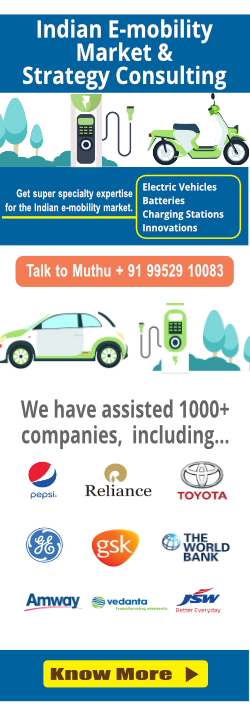Capital Cost Benchmarks for Solar PV Projects
A Guest Expert Blog Post by Ezysolare
Cost Comparison Of Solar PV Projects over past 4 Financial Years
*Click on the above table to enlarge the view
*Click on the above chart to enlarge the view
We know that cost of Solar Power Projects has decreased over the years. In 2013-14 the cost reduced by 1.09%, in 2014-15 it reduced by 15.84% and this year the benchmark capital cost of solar PV projects has reduced by 9.68% as compared to the previous year.
The change in prices of various particulars is believed to be due to the following reasons :
1. Modules : The total cost of modules should also include the Freight & Insurance costs. Also the money exchange rate plays an important role in determining the average cost for the modules.We observe that the module cost has decreased by 3.53%over the past 4 years.
2. Land Cost : We observe that over the past four years, the cost of land increased by 48.81%. Land, being a State issue, has different cost and acquisition timelines/ formalities associated with it depending upon the relevant procedures of the state and the type of land and demography.The land acquired for setting up solar power projects is mostly arid/barren or of no commercial use. However, factoring in the increase in land cost and with due regard to the diversity in land prices in different States, and with increase in the average module efficiency, the land required for the crystalline PV project has reduced. Therefore, the Commission decided land cost at Rs. 25 Lakh/MW (Rs. 5 Lakh/Acre * 5 Acre/MW) for Solar PV projects.
3. Civil & General Work : The cost of civil and general work has reduced by 47.09% over past 4 years due improved design practices.The cost associated with civil works includes testing of soil, preparation of soil/ground with all necessary works like earthmoving, digging holes for the foundations/pilings and levelling, fencing of the land, development of approach road, cable trenches , water supply arrangement in solar farm, control room etc. The General works include security of solar farm, setting up of power back – up generator; yard lighting, Earthling Kits, etc.
4. Mounting Structure : The cost of mounting structures have reduced by 52.38% over past 4 years. Over the period the capacity size has increased and experience curve has moved up. The solar power market has matured and reduction costs are envisaged. With advancement of technology, the efficiency of solar cells has also increased. Therefore cost of mounting structure in per MW terms has also decreased.
5. Power Conditioning Unit : Over the past four years, the improvement in power electronics and scalability of manufacturing has resulted in 25% reduction in inverter cost .
6. Evacuation : This expenditure includes costs towards DC cabling between Solar PV panels & Inverters including junction boxes, AC cabling between Inverter & sub – station, LT panels, HT panels , earthling arrangements, step up outdoor type transformer, breaker, current transformers, potential transformers, auxiliary transformers control cables, isolators, lightning arrestors, protection relays and Time of Day (ToD) meters / tariff meters, peripheral lighting , telemetry system for real time monitoring etc. This expense has reduced by 47.62% due to design efficiency.
7. Preliminary and Pre-operative expenses including IDC and contingency : Detailed breakup of Preliminary and Pre-operative expenses and financing cost, lump sum in percentage of total capital cost is as under:
- Insurance Cost: 0.5 %
- Contingency: 0.5%
- Interest during Construction (IDC): 5%
- Financing cost: 1%
- Project management cost: 0.5%
- Pre-operative Cost: 0.5%
PV is now a mature, proven technology that is rapidly approaching grid parity. It is a secure energy source with very high plant reliability and is not exposed to any fuel price volatility. PV has made remarkable progress in reducing costs with a focused, forward looking and innovative fiscal and financial policies adopted by Ministry of New and Renewable Energy, Government of India and various State Governments. With these fiscal and financial policies, the Preliminary and Pre-operative expenses have reduced significantly.
Source : Central Electricity Regulatory Commission – http://cercind.gov.in/
*Project Capacity : 1 MW
Author: This post was written by Ezysolare
Ezysolare is a venture supported by CIIE, IIM Ahmedabad. It makes the end user’s process of going solar hassle free, cost effective and simple by providing online Energy Assessment, Layout, Detailed Engineering and Solar Equipment Ordering Services on http://www.ezysolare.com
”If you found this post useful, help it spread by emailing to your friend or sharing it on twitter/Facebook/linkedIn. Please write in to us at mohitagarwal@ezysolare.com “










